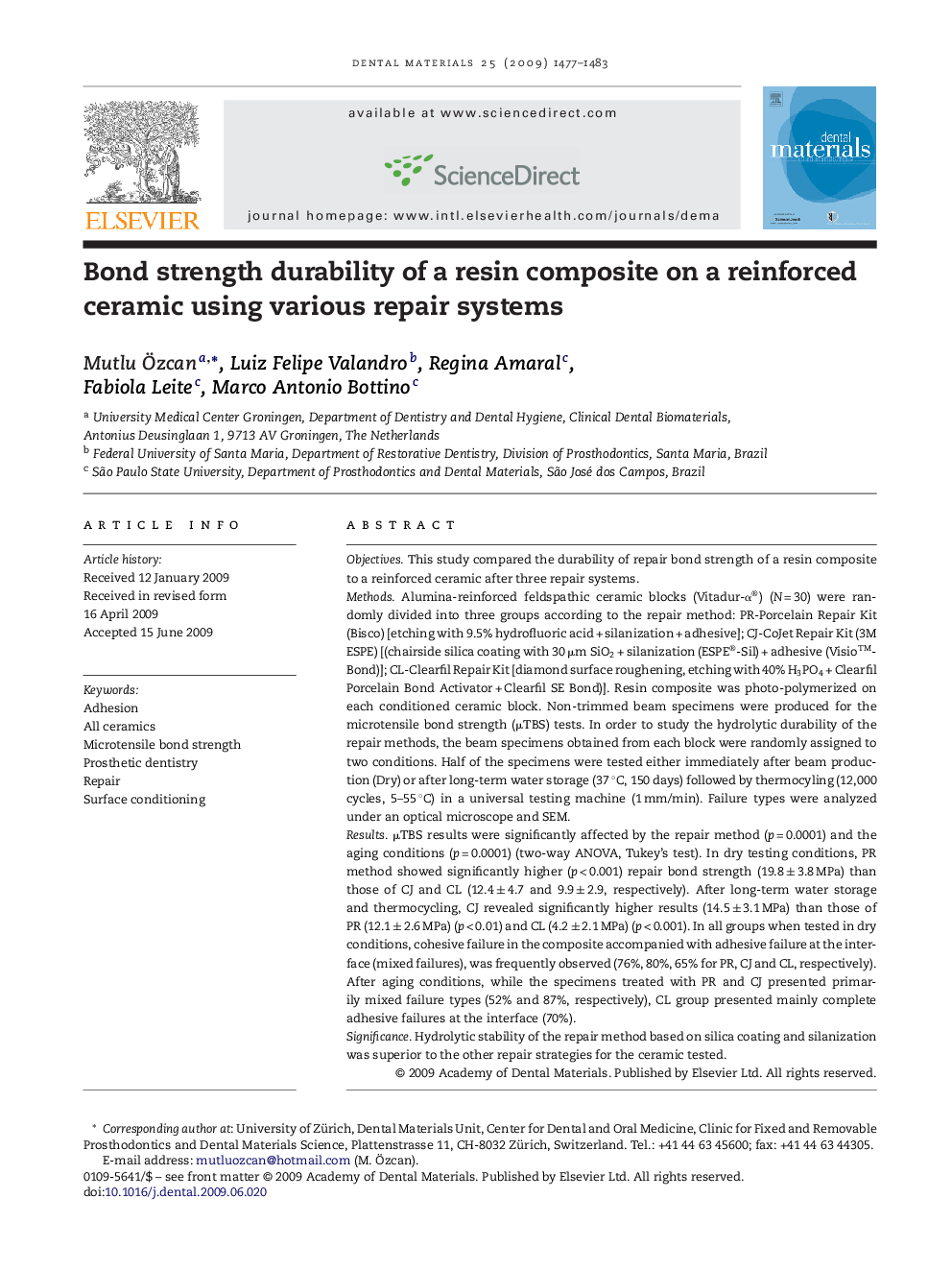| کد مقاله | کد نشریه | سال انتشار | مقاله انگلیسی | نسخه تمام متن |
|---|---|---|---|---|
| 1421956 | 986432 | 2009 | 7 صفحه PDF | دانلود رایگان |

ObjectivesThis study compared the durability of repair bond strength of a resin composite to a reinforced ceramic after three repair systems.MethodsAlumina-reinforced feldspathic ceramic blocks (Vitadur-α®) (N = 30) were randomly divided into three groups according to the repair method: PR-Porcelain Repair Kit (Bisco) [etching with 9.5% hydrofluoric acid + silanization + adhesive]; CJ-CoJet Repair Kit (3M ESPE) [(chairside silica coating with 30 μm SiO2 + silanization (ESPE®-Sil) + adhesive (Visio™-Bond)]; CL-Clearfil Repair Kit [diamond surface roughening, etching with 40% H3PO4 + Clearfil Porcelain Bond Activator + Clearfil SE Bond)]. Resin composite was photo-polymerized on each conditioned ceramic block. Non-trimmed beam specimens were produced for the microtensile bond strength (μTBS) tests. In order to study the hydrolytic durability of the repair methods, the beam specimens obtained from each block were randomly assigned to two conditions. Half of the specimens were tested either immediately after beam production (Dry) or after long-term water storage (37 °C, 150 days) followed by thermocyling (12,000 cycles, 5–55 °C) in a universal testing machine (1 mm/min). Failure types were analyzed under an optical microscope and SEM.ResultsμTBS results were significantly affected by the repair method (p = 0.0001) and the aging conditions (p = 0.0001) (two-way ANOVA, Tukey's test). In dry testing conditions, PR method showed significantly higher (p < 0.001) repair bond strength (19.8 ± 3.8 MPa) than those of CJ and CL (12.4 ± 4.7 and 9.9 ± 2.9, respectively). After long-term water storage and thermocycling, CJ revealed significantly higher results (14.5 ± 3.1 MPa) than those of PR (12.1 ± 2.6 MPa) (p < 0.01) and CL (4.2 ± 2.1 MPa) (p < 0.001). In all groups when tested in dry conditions, cohesive failure in the composite accompanied with adhesive failure at the interface (mixed failures), was frequently observed (76%, 80%, 65% for PR, CJ and CL, respectively). After aging conditions, while the specimens treated with PR and CJ presented primarily mixed failure types (52% and 87%, respectively), CL group presented mainly complete adhesive failures at the interface (70%).SignificanceHydrolytic stability of the repair method based on silica coating and silanization was superior to the other repair strategies for the ceramic tested.
Journal: Dental Materials - Volume 25, Issue 12, December 2009, Pages 1477–1483